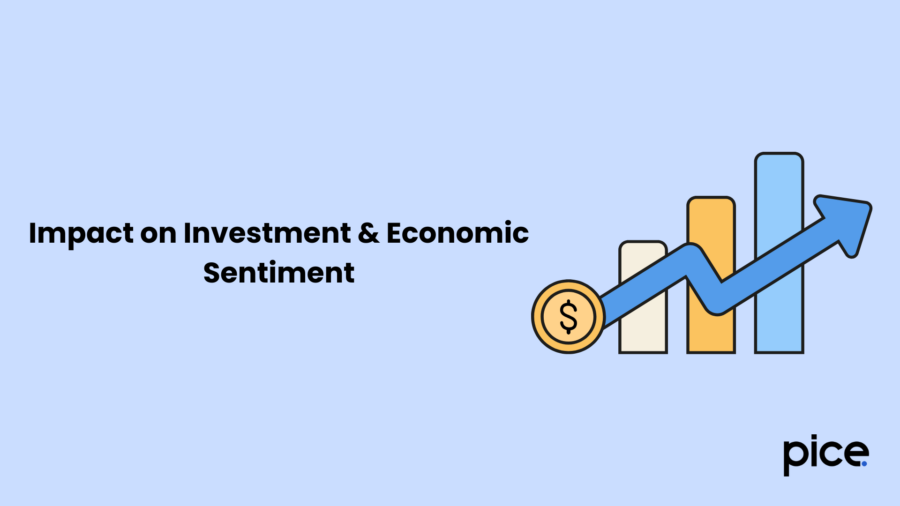Impact of GST on Consumer Buying Behaviour
- 20 Jun 25
- 8 mins

Impact of GST on Consumer Buying Behaviour
Key Takeaways
- GST has streamlined the taxation system, enhancing transparency and boosting consumer confidence.
- Price changes under GST have shifted consumer demand, favoring goods with lowered rates and discouraging costly services.
- Improved purchasing power due to reduced tax burden has encouraged spending on premium products.
- GST has fueled the growth of e-commerce by standardizing tax and simplifying the online buying experience.
- A unified tax regime has balanced regional consumption trends and bolstered national economic sentiment.
The revolutionary Goods and Services Tax (GST) system was introduced in India on the 1st of July, 2017. It significantly impacted the taxation landscape by replacing indirect taxes- Service Tax, VAT, and others - with one unified tax obligation.
This was done to simplify the entire tax collection process in our country, with the ultimate aim of creating a single national market. The very impact of this fresh GST policy has been noticeable in relation to consumer behaviour. It has affected their buying patterns, expenditure habits, as well as their overall economic standing.
This blog shall discuss the impact of GST on consumer buying behaviour in 2025 and other associated details.
Impact of GST on Consumer Behaviour in 2025

Here is how the impact of GST was manifested through consumer behaviour in 2025:
- Simplification & Transparency
The introduction of GST has made the tax system more comprehensive and easier to navigate. Before the GST regime, there were several indirect taxes to pay. Currently, a single GST tax is all that the consumer has to cover.
Whatever the consumer buys, they are applied to pay only one GST tax. So, the first and most prominently felt impact of GST on consumer behaviour has been simplifying the tax system, allowing buyers to understand their obligations with better transparency. There has been a boost in consumer confidence.
- Changes in Prices & the Perceived Value
GST has affected the price tags of goods/services to various degrees. For certain items, the associated taxes have decreased, leading to lowered prices. This has led to higher demand from consumers. For instance, electronics, daily-use items, and some household products have become cheaper after implementing GST.
On the other hand, certain services, such as insurance, telecom, and even banking, have become more expensive comparatively, owing to higher GST percentages.
Rate alterations, specifically goods/services experiencing a hike in price, have caused consumers to struggle to avail themselves of them. The math is simple; however, the new, low prices are drawing in more customers than before. Higher rates make individuals take a step back in some cases before making any final purchases.
- Impact on the Consumer Buying Power & Consumption Patterns
The implementation of GST on consumer behavior has also affected how much consumers spend to avail of certain goods/services. This, too, has had an impact on consumer behaviour. Having minimised the overall tax on several items, GST has boosted disposable income. It has allowed consumers to polish their purchasing power, and they are able to spend more on other items/services. The shift initiated by the introduction of GST in India has significantly altered how consumers spend, with aided willingness to opt for premium items.
Businesses are also at an advantage under the GST regime, even though the costs of certain goods/services have been reduced. With lower costs, more customers are willing to buy from the businesses. Normally, they would probably not have the same amount of sales if the skyrocketing high prices had scared off potential customers.
- Influence on E-commerce & Online Shopping

The immeasurable influence of GST on consumer behaviour is a major reason why e-commerce websites will be so in demand in 2025. The introduction of GST has positively impacted the online shopping sector. Considering how the tax rates have been currently standardised, the process has become much more streamlined and easier to manoeuvre. Buyers can easily purchase any product online. The tax amount is also added to the goods' price tag. Consumers are not required to pay an 'extra charge' separately after or while buying the products.
Buyers may also register complaints if a product is delivered damaged or does not work properly. Online shopping has become much more rewarding and simple, as one can look at different products, compare their prices, and choose accordingly.
- Shift in Consumer Preferences
The implementation of GST has also affected consumer preferences. They choose products that are priced reasonably, including tax. Buyers prefer to opt for electronic products and home appliances with the lowest possible costs. Any given middle-class family that needs to invest in appliances or, say, a home inclines towards the lowest rates. The GST system has made tax benefits available not only to the rich but also to families at different levels of financial standing.
GST on Consumer Behaviour has helped fetch more business to enterprises under the new and flourishing tax system. It has vastly improved product quality and thrives on consumer trust. Thus, consumers now prefer branded/certified products at reasonable prices, which has become an understandable reality.
- Regional Disparities & Consumption Trends
Prior to the implementation of GST, the various states of India had a multitude of tax rates to consider. This led to massive cost differences and an uneven buying pattern across the regions. The introduction of GST serves as the unifying entity, affecting prices nationwide. This has led to a reduction in regional differences, establishing more of a balanced national market, all of it on the same page.
Consumers based in states with higher taxes have now been seeing convenient price drops. This has led to a boost in spending and economic initiatives across such destinations.
- Impact on Investment & Economic Sentiment

The introduction of GST in India has boosted economic confidence noticeably. This overall enhanced confidence, built to fruition from the stability and predictability bestowed by a single tax system, has also influenced consumer behaviour. It encourages more spending and even investment initiatives across long-term arenas, including real estate, durable goods, etc. This has, in turn, further stimulated economic growth in our country, accounting for a cycle of boosted investment/consumption.
Conclusion
In conclusion, the GST regime in India has vastly influenced consumer behaviour, affecting spending habits, buying decisions, consumption trends across various regions, and economic optimism. GST has simplified the otherwise complex tax system in India, making it much more transparent. It also has allowed consumers to make better purchase-related choices.
Rate alterations, purchasing power, and multi-layered market dynamics have established a brand-new consumer landscape. It reflects a broader economic evolution brought about by this pivotal tax reform. GST, however, continues to evolve as it should. The long-term impact of GST on consumer buying behaviour will predictably become all the more prominent, integrating and energizing the economy in ‘India of the future’.
💡If you want to streamline your invoices and make payments via credit or debit card or UPI, consider using the PICE App. Explore the PICE App today and take your business to new heights.

















